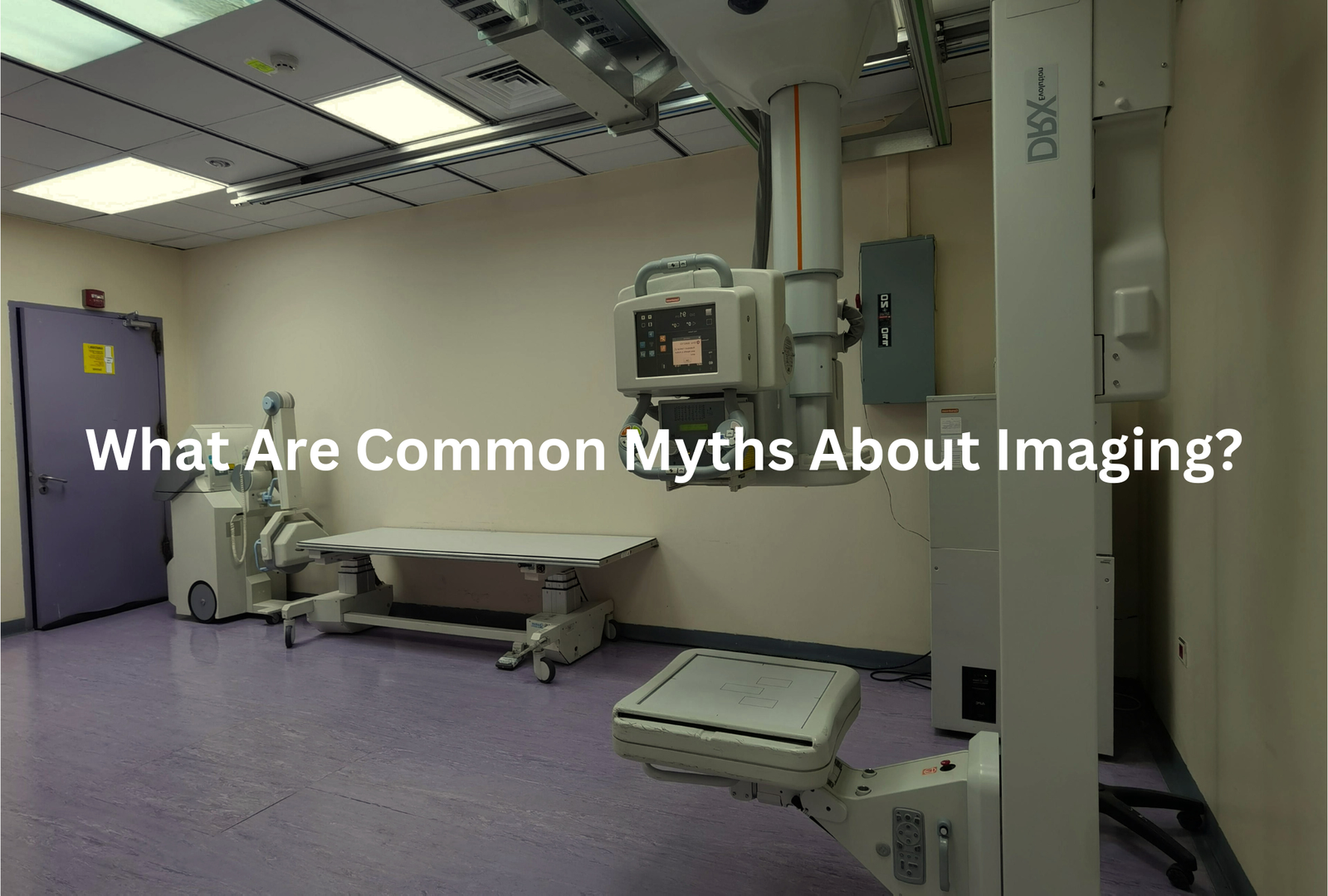Radiology tests like CT scans and X-rays can be confusing. Find answers to common questions to help you prepare and feel comfortable during your test.
Radiology helps doctors see what’s going on inside a patient’s body. Common questions people ask include: What’s the difference between an X-ray and a CT scan? An X-ray shows bones, while a CT scan gives a detailed image of organs and soft tissues.
Is it safe? Yes, but doctors only use the amount of radiation needed. How long do the tests take? Usually, about 10 to 30 minutes, depending on the type of scan. Remember, it’s okay to ask your doctor about any concerns. Keep reading to learn more about how radiology works and what to expect!
Key Takeaway
- Radiology tests help doctors see inside the body without surgery.
- It’s okay to ask questions if you have concerns about your test.
- Safety is important; some tests use radiation, while others don’t.
What is Radiology?
Radiology is like a window into the body, letting doctors see inside without surgery. It uses imaging tests—X-rays, CT scans, MRIs, and ultrasounds—to figure out what’s happening. Each has its own job. X-rays are great for bones, MRIs (using magnets and radio waves) show detailed soft tissue images, and ultrasounds (using sound waves) are often used in pregnancy or for organs like the liver.
These tests aren’t just for serious illnesses. They’re used for everyday problems too. A sprained ankle? An X-ray checks for fractures. Stomach pain? A CT scan might find the cause, like appendicitis. Radiology helps guide treatments and track healing.
I remember breaking my arm as a kid. The X-ray took five minutes, and seeing my bones on the screen was wild. The doctor explained everything, which made it less scary. If you’re nervous, ask questions. Knowing what to expect can make it easier—and even interesting.
What Happens During a Scan?
Some scans are over in a blink, while others take a bit longer, but none are as scary as they might seem.
- X-rays are the quickest, often done in just a few minutes. You won’t feel a thing.
- CT scans (computed tomography) take a bit more time—15 to 60 minutes. They capture detailed images from different angles.
- MRIs (magnetic resonance imaging) can last up to an hour. They’re louder, with banging noises, and you’ll need to lie still.
I had a CT scan once for stomach pain. I was nervous, but the radiology team explained everything. It only took 20 minutes, and the machine was quieter than I’d imagined.
Preparation makes a difference(1). Wear comfortable clothes, expect some odd sounds, and bring music for MRIs if allowed. Don’t hesitate to ask questions—the staff are there to help you feel at ease.
Is it Safe?

People often ask, “Is it safe?” when told they need a scan. Radiation can sound scary, but it’s more controlled than it seems.
Here’s how it works:
- A chest X-ray gives about 0.1 millisieverts (mSv)—similar to 10 days of natural background radiation.
- A CT scan of the abdomen might be 8 mSv, which equals around three years of natural exposure.
- MRI scans? No radiation at all. They use magnetic fields and radio waves instead.
When I first heard “millisieverts,” it felt overwhelming, like something from a sci-fi movie. But learning that these doses are small and purposeful helped me relax.
Doctors don’t recommend scans lightly. The benefits of finding a problem often outweigh the tiny risk. Machines are also designed to limit exposure.
If you’re unsure, ask questions. Radiology staff can explain everything. And remember, an MRI means no radiation—just loud noises and a bit of patience.
What Should I Wear?
Getting ready for a scan might seem simple, but what you wear actually matters. Comfort is key, and avoiding metal is even more important.
Loose clothes like sweatpants, a plain T-shirt, or pyjamas work best. But steer clear of anything with metal—zippers, buttons, or jewellery. Metal can mess up the images and might even delay the scan. Nobody wants to wait longer than they have to.
I remember my first CT scan. I wore my softest trackies and an old shirt. It felt like a small comfort in a room that wasn’t exactly warm or welcoming. For MRI scans, magnets are involved (really strong ones), so leaving jewellery, belts, or anything metal at home isn’t just smart—it’s safe.
If you’re unsure, ask ahead. Some places have gowns, but let’s be honest, they’re not the cosiest. Wear comfy, metal-free clothes, and you’ll be ready for the scan without extra hassle.
What if I Have Metal Implants?
The machines hum loudly, cold air moves through the room, and everyone seems to know exactly what they’re doing—except maybe you. Scans like MRIs or CTs can feel overwhelming, but what’s inside your body matters more than you think.
If you’ve got any metal implants, it’s crucial to tell the radiologist(2). MRIs, for instance, use powerful magnets—so strong they can interfere with metal objects or even cause harm if not handled properly.
Here’s what to mention:
- Pacemakers or defibrillators
- Cochlear implants
- Metal screws, rods, or plates
- Stents or surgical clips
I once worried about a small metal plate in my arm during an MRI. It turned out fine, but the radiologist appreciated knowing—it let them double-check.
Sometimes, they’ll ask for details like the implant’s material or model. It might feel like a hassle, but it’s worth it. A quick chat keeps you safe and makes the scan smoother for everyone.
Do I Need to Prepare for My Scan?
The waiting room always feels like a quiet bubble—soft whispers, the hum of air conditioning, and people flipping through old magazines. But getting ready for a scan? That’s where things can get tricky. It all depends on the test.
For CT scans, if contrast dye’s used, you’ll likely need to drink more water after. It helps clear the dye from your system. Sounds easy, but after sitting through the test, even that can feel like a task.
MRIs are different. If you’re claustrophobic or need sedation, you might have to fast for a few hours. I remember skipping breakfast once—it felt like forever.
Here’s a quick prep list:
- Stay hydrated for CT scans with dye.
- Avoid metal (zippers, jewellery, etc.) for MRIs.
- Follow fasting rules if sedation’s needed.
- Mention allergies, especially to contrast dye.
If unsure, ask. It’s better to double-check than show up unprepared. you don’t forget twice.
Can I Ask Questions?
The room smelled faintly sterile, like clean plastic and disinfectant. Hospitals and imaging centres can make you feel small, but you don’t have to just sit there quietly. Asking questions helps you feel involved.
I remember my first MRI. I was nervous, so I asked, “Will it be loud?” The technician smiled and said I’d hear banging sounds, like a muffled jackhammer. They even gave me earplugs. Knowing that made it easier.
Here are some good questions to ask before your scan:
- What will it feel like?
- Are there risks, like allergies to contrast dye?
- How long will it take?
- Should I avoid anything before or after?
Sometimes, answers surprise you. After one CT scan, I had to drink a litre of water to flush out the dye. Even if you’re shy, ask. It’s your body, your scan. Understanding it makes all the difference.
What Are Common Myths About Imaging?

Some ideas stick around, even when they’re wrong. People often think radiology tests are scary or dangerous, but most of what you hear isn’t true.
Take MRIs, for example. Many believe they use radiation. They don’t. MRIs work with magnets and radio waves to make detailed images (pretty clever, really).
Then there’s the myth that all imaging tests hurt. They don’t. Most are painless. I had a chest X-ray once, and the worst part was standing still against a cold panel. Uncomfortable? Sure. Painful? Not at all.
Here are some common myths:
- MRIs use radiation. False. Magnets do the work.
- All tests hurt. Nope. Most are painless.
- Contrast dye is dangerous. Rarely. It’s safe for most people.
If something sounds off, ask your doctor. They know the facts. Understanding the truth makes tests less scary and helps you feel more in control.
How Does Tele-Radiology Work?
Tele-radiology is one of those things that shows how far technology has taken us. A doctor in Sydney can send a medical image to a radiologist in Perth, who reviews it almost instantly. Distance doesn’t matter anymore.
This is a game-changer for rural areas. Imagine a small town with one GP but no imaging specialists. A patient gets a CT scan, and the image is sent securely to a radiologist in the city. They interpret it and send back a report, saving the patient a long trip.
I spoke to someone outside Adelaide who said tele-radiology saved their mum from a painful journey. Her hip scan was reviewed within an hour, confirming it wasn’t broken.
Here’s the process:
- Images (like X-rays or MRIs) are taken locally.
- Files are sent securely to specialists.
- Reports come back quickly.
It’s fast, efficient, and life-saving for remote communities.
What Are Interventional Radiology Procedures?
Sources: Mayo Clinic.
Interventional radiology feels like modern-day magic(3). It’s where imaging tech meets precision, turning tricky surgeries into simpler, less painful fixes. I saw a clip once of a doctor using ultrasound to guide a tiny needle into someone’s liver for a biopsy. It was like sewing with x-ray vision.
Here’s how it works:
- Doctors use imaging tools like X-rays, CT scans, or ultrasounds to guide them.
- Instead of big cuts, they use tiny instruments, sometimes just a few millimetres wide.
- They can do things like biopsies, drain fluids, or even treat tumours with heat or freezing.
A mate told me their dad had a blocked artery fixed this way. The doctor used a catheter (a thin tube) and placed a stent, all guided by X-rays. No open surgery, just a small puncture. He was walking the next day. Less pain, faster healing. It’s medicine doing more with less.
FAQ
What is a chest X-ray (CXR) and how is it used in radiology?
A chest X-ray, or CXR, is a common radiological procedure that uses a small amount of radiation to create images of the chest and upper body. CXRs are often used to evaluate the lungs, heart, and other structures in the chest for conditions like pneumonia, lung cancer, or pleural effusions.
How do upper lobe and lower lobe pneumonia differ?
Upper lobe pneumonia and lower lobe pneumonia refer to where the infection is located in the lungs. Upper lobe pneumonia often has more acute symptoms, while lower lobe (LLL) pneumonia can sometimes be more difficult to diagnose. Both types require prompt medical care and imaging tests like CXRs or CT scans to confirm the diagnosis.
What is situs inversus and how does it affect medical imaging?
Situs inversus is a rare condition where the major organs in the body are reversed or mirrored from their normal position. This anatomical difference can impact how medical imaging like X-rays or CT scans are interpreted, since the structures will appear flipped. Identifying situs inversus is important for providing appropriate patient care.
What are the risks associated with medical imaging procedures?
Medical imaging tests like X-rays, CT scans, and MRIs generally have a low risk, but there are some potential risks to be aware of. These include exposure to small amounts of radiation, allergic reactions to contrast mediums, and the small chance of complications from the procedure itself. Your referring physician can discuss the benefits versus risks for your specific situation.
What are some common interview questions for radiology positions?
Interviews for radiology roles often include questions about your experience with different imaging modalities, your approach to patient care, and your ability to work collaboratively with other healthcare providers. True or false questions on radiological conditions or procedures may also be used to assess your medical knowledge. Being prepared to discuss your qualifications and problem-solving skills can help you ace the interview.
Conclusion
Radiology can seem a bit scary, but knowing some important things can help ease your worries about tests. It’s good to know what to wear and that asking questions is totally okay. Feeling informed makes a big difference in your comfort. If you’ve got any specific questions about your upcoming scans, don’t hesitate to ask your healthcare provider. They’re there to help you feel at ease and answer all your concerns!
References
- https://www.cancercouncil.com.au/cancer-information/tests-and-scans/imaging-scans/
- https://www.orthosa.com.au/new-sa-research-on-the-effects-of-metal-implants-and-frequent-radiology-in-spinal-deformity-patients/
- https://www.insideradiology.com.au/interventional-radiology/#:~:text=Interventional%20radiology%20is%20a%20medical,range%20of%20interventional%20medical%20procedures.




